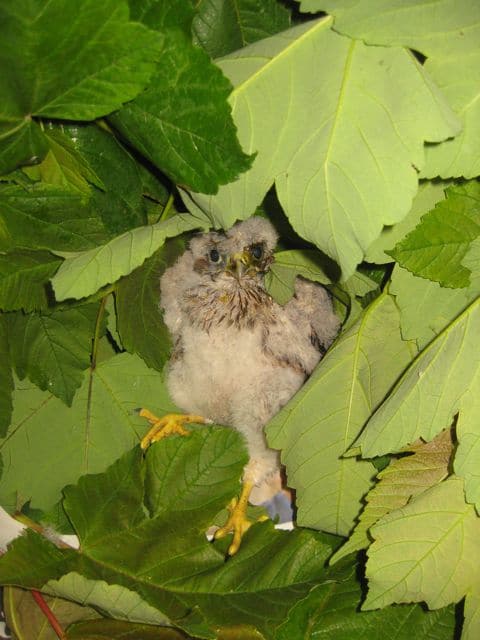Sanctuary Life
Baby Kestrel survives attack
We think that this little fella is a baby kestrel. He’s come out of somebody’s nest and doesn’t have proper feathers yet so he can’t fly. His parents were nowhere to be seen when he was spotted yesterday evening being attacked by a gang of magpies. He’s been ‘roughed up’ and is a bit bedraggled but he has no serious injuries. He’s thin and dehydrated though. Birds of prey don’t normally drink, they get all their fluid from their diet, which is raw meat.
Magpies prey on the weak and vulnerable and even a young kestrel is no match for them. When he’s grown up it will be a different matter, even at this age his beak is hooked and sharp and his feet have talons that nearly pierce the skin when he is handled. ‘Ouch!’ Gloves are essential!
A passer by scooped this kestrel up and undoubtedly saved his life (thanks dear friend). He was brought in to us, shocked and dazed and having only just survived his ordeal. If we had known where his nest was we would have returned him – being reared by his parents is the best thing for him. But he was on a lane in open countryside and there was no sight of his home.
Shock is the biggest killer of birds, being handled by humans and taken away from their natural environment is a terrible thing for them. We aim to replicate their tree and their nest and keep them as quiet as possible so we provide lots of leaves and twigs. We can’t put this youngster in the nursery with the other fledgelings though. Why? Because kestrels, in their turn, prey on other birds. They are ferocious hunters when adult and will take any small live prey. Our lame pigeons and crows who can’t fly might be too much of a temptation!
Getting a young bird of prey to feed is the next problem to overcome – if he won’t eat then sadly it will be goodbye. If we can get him to take some meat then we’re in with a chance. We’ll let him settle a while and then we’ll give it a try. It’s all up to you Kes….

